An endless coastline, rich heritage and spirit of imagination converge in Florida to create the ultimate luxury lifestyle.
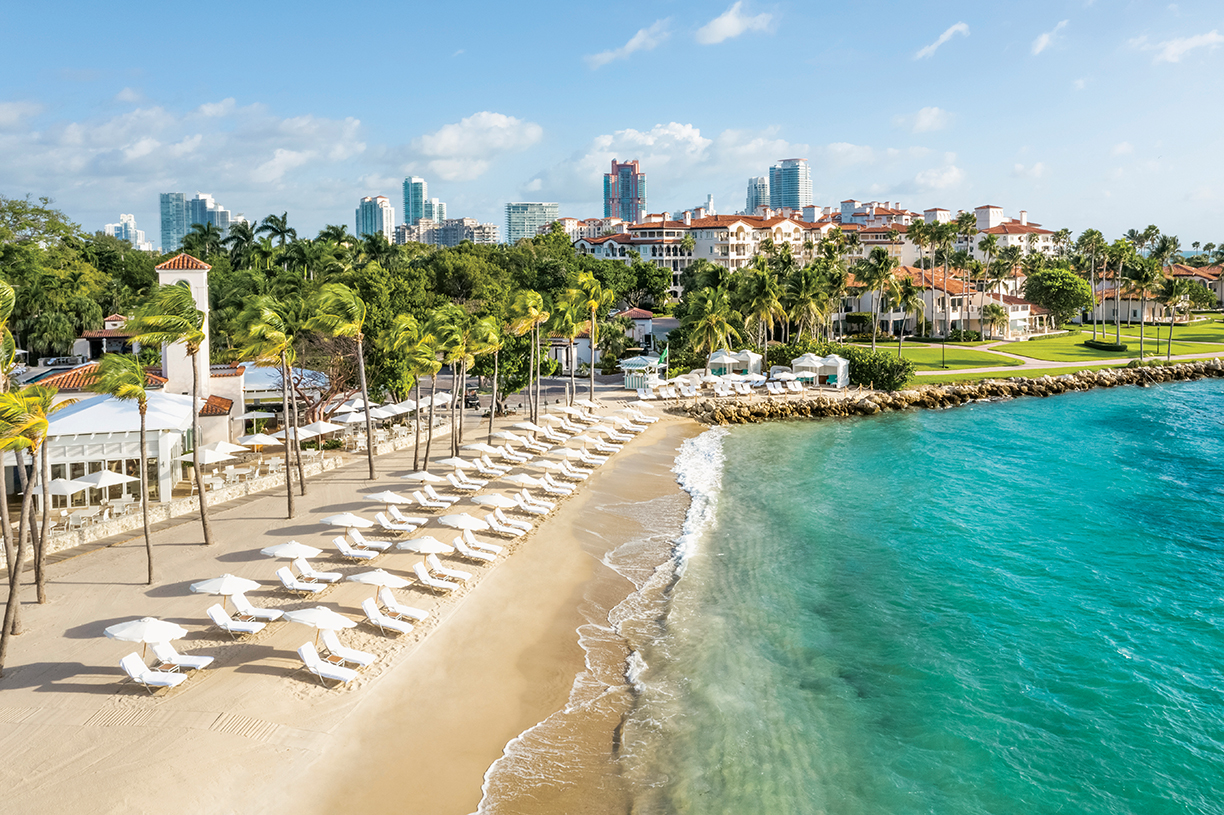
Photo courtesy of Fisherland Club
Fisher Island Club
Florida is a kaleidoscope of iconic images, from signature white-sand beaches and championship golf to Miami’s seductive skyline or theme parks encompassing much more than simply a Magic Kingdom. The entire world convenes on this alluring peninsula for every imaginable recreational experience, and its elite residents enjoy unparalleled luxury.
Florida cannot be defined by a single place or attitude, as its communities represent an incredible spectrum of physical and cultural diversity. Some feel a bit like Savannah or Biloxi, others more spiritually akin to Havana, San Juan or Brooklyn with traditions, music and aromas to match the accents. The fourth-generation Pensacola fisherman and the South Beach fashion designer who recently emigrated from Brazil contribute equally to the state’s personality.
Beachfront
With its 1,350 miles of coastline, luxury residential and hospitality developers find Florida irresistible. South Florida, where the Atlantic Coast is almost continuously developed from Miami to Palm Beach, receives the most attention, but beautiful beaches are also found in less congested areas.
Ideal for catching rays are Clearwater Beach outside Tampa and Atlantic Beach near Jacksonville, both offering wide expanses of white sand. The Space Coast’s Cocoa Beach is favored by surfers, while the dune-swept beaches of Amelia Island attract bird-watchers. The Ritz-Carlton Amelia Island is preferred by amateur ornithologists seeking maximum comfort.
Florida’s Panhandle, whose oceanfront is appropriately referred to as the Emerald Coast, features uncrowded beaches with sugar-white sand. “Distinctly more Southern than South Beach, the area is a throwback to the uncluttered and carefree beach lifestyle of years past,” reports David Merryman, manager of a premier boutique hotel called The Pearl, whose Rosemary Beach locale is reminiscent of New Orleans’ French Quarter.
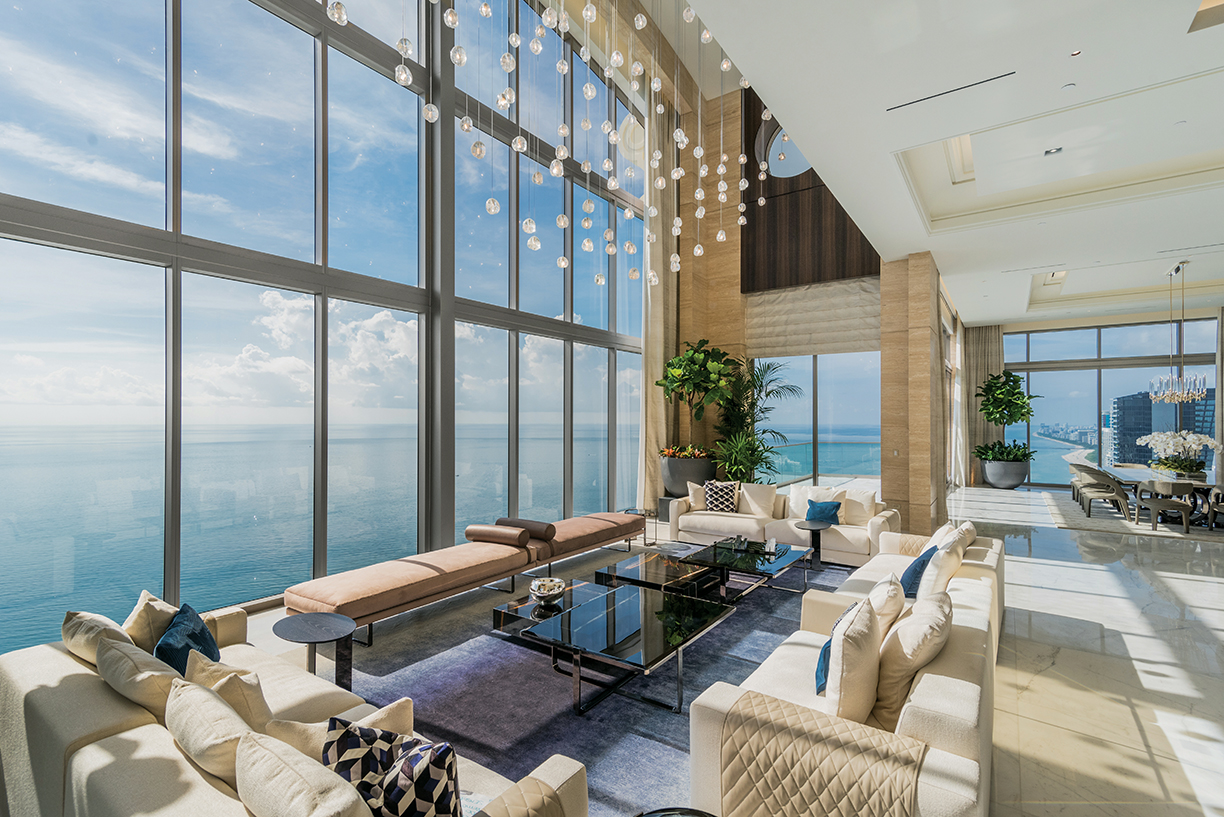
Photo courtesy of Venjhamin Reyes
The Penthouse at The Mansions at Acqualina
Tee Time
It is impossible to overstate the significance of golf to Floridian culture and economics. The game is almost a religion here, despite competition from major league and high-profile university teams, not to mention watersports. Golf generates $11 billion annually to Florida’s economy, a figure surpassing the state’s portfolio of theme parks. With approximately 1,250 courses, Florida offers more opportunities for duffers than any other state, while touring professionals are attracted to the climate, amenities and absence of state income tax.
Based in Palm Beach Gardens, PGA legend Jack Nicklaus is nearly as dominant in golf course design and development as he was on the links at the height of his career. The Golden Bear has designed courses throughout Florida, including King & Bear in St. Augustine, a collaboration with the late Arnold Palmer. The Bear’s Club in Jupiter features a 40,000-square-foot Tuscan-style clubhouse and $10 million estates line its fairways. In Naples, Nicklaus rival Greg Norman authored two courses at Tiburón Golf Club, paired with a Ritz-Carlton hotel.
Luxury homeowners on the barrier islands — they trace Florida’s Atlantic Coast like a string of pearls — enjoy access to both championship golf and the water. Because it occupies a small island, the homes surrounding South Florida’s Indian Creek Country Club are both waterfront and golf course-adjacent, resulting in prices pushing $30 million. Less pricey is the real estate bordering Juno Beach’s Seminole Golf Club, but its membership is so exclusive it reportedly once turned down Nicklaus himself.
State of Design
While influences are imported from other regions, Florida has developed its own signature style, most conspicuous in its architecture. The charismatic skyline of Miami first gained attention during the opening credits of the iconic 1980s series Miami Vice, and things have only accelerated since.
With flashy postmodern buildings and pastel-hued Art Deco jewels, Miami makes other American cities look gray and unimaginative. Celebrity architects from around the world — Norman Foster, Frank Gehry and Zaha Hadid, to name a few — have contributed to the metro area’s skyline, which some experts consider the greatest design laboratory in the world.
Much of Miami’s world-class architecture is driven by a competitive luxury real estate market in which developers use design to sell condos at a premium. In addition to those “starchitects,” residential towers are emblazoned with luxury brands — Aston Martin and Porsche from the automotive world, Armani and Fendi from the fashion world — to increase cachet value. Then-chairman/CEO Pietro Beccari stated at the project launch, “It fully expresses the codes, history and savoir faire that characterize Fendi.”
Further honoring that creative spirit is the 18-block Miami Design District that combines luxury home furnishings (e.g. Bulthaup, Poltrona Frau) with legendary fashion labels Cartier, Versace and Hermès, as well as chic restaurants and the Institute of Contemporary Art’s sleek new digs. The Gulf Coast city of St. Petersburg has created multiple districts to promote local artists and artisans.
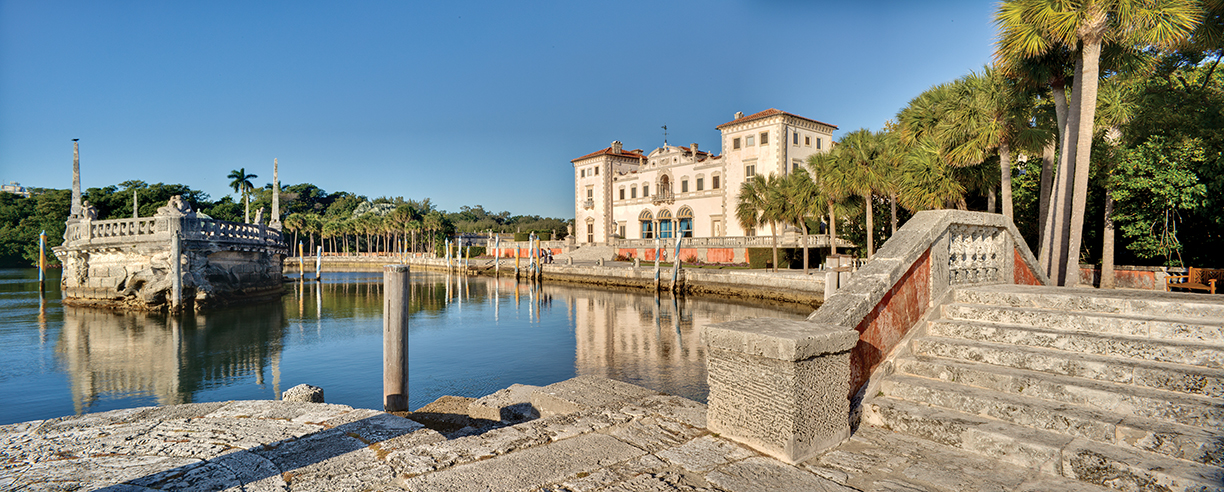
Photo courtesy of Bill Sumner
Vizcaya Museum & Gardens on Biscayne Bay
Extended Stay
Demand for luxury accommodations has fueled massive investments by premier hospitality brands, including a dozen-plus Ritz-Carlton properties throughout Florida. The Fontainebleau, an iconic landmark in Miami Beach since its debut in 1954, has been reimagined as a trendy, Vegas-style property for a new generation. More laid-back is Little Palm Island Resort & Spa on Little Torch Key, which will soon reopen after Hurricane Irma shuttered it for two-and-a-half years. Pat Colee, founding owner of Noble House Hotels & Resorts, states, “This restoration has been a true labor of love and we believe we’ve maintained the authentic character of Little Palm while ushering in added amenities.”
Historic and stately are The Breakers in Palm Beach, a perennial high society retreat, and Miami’s Fisher Island Club Hotel & Resort, a former Vanderbilt estate located in America’s wealthiest ZIP code, a seven-minute ferry ride from the mainland. CEO Bernard Lackner says of the intimate hotel with private club privileges,
“One of the few true private island sanctuaries, Fisher Island offers a lifestyle rich in leisure and recreational activities, yet just minutes from Miami’s world-class commercial, cultural and culinary offerings.”
In Florida, luxury hospitality companies have experimented with their branding of condominiums, an increasingly popular trend. Fort Lauderdale, once famous for spring break, is the site of a glitzy Four Seasons Private Residences where a 3,965-square-foot unit commands $8.9 million. “Four Seasons Fort Lauderdale has captivated buyers with its beautiful, high-class design and comprehensive lifestyle experience in the yachting capital of the world,” states Nadim Ashi, founder of project developer Fort Partners.
The Acqualina Resort & Spa in Sunny Isles Beach, one of Greater Miami’s most exclusive hotels, offers luxury residences at the Mansions at Acqualina. A $38 million penthouse in that tower includes both a Rolls-Royce and Lamborghini.
Arts & Culture
Most surf-and-sun destinations lack robust art scenes, but Florida’s cultural calendar attracts talent from around the globe. Even laid-back locales offer engaging opportunities such as Coral Springs Museum of Art near Pompano Beach, Dalí Museum in St. Petersburg and the Ernest Hemingway House in Key West. “Culture Builds Florida” is a statewide arts campaign designed to promote these assets.
Art Basel is one of the world’s most prestigious art shows (and celebrity scenes), earning Miami the international stature usually reserved for much larger cities. Year-round, Miami offers the Pérez Art Museum Miami (PAMM) and the stunning Vizcaya Museum & Gardens on Biscayne Bay while performing arts enthusiasts gather at the César Pelli-designed Adrienne Arsht Center or Gehry-designed New World Center.
Tampa’s Straz Center — it is the largest performing arts venue in the state — has been a catalyst for downtown development. “The slogan ‘Culture Builds Florida’ is true and true for us in the Tampa Bay area as well,” reports Judith Lisi, president & CEO of the Straz Center. “The arts renaissance throughout Florida reflects a statewide sense of wanting more authentic, more alive experiences in local communities,” she says.
Photo courtesy of Bazaar Photo © 2013 Ryan Forbes
The Bazaar on South Beach
Culinary Clout
With multiple cultures converging in a resort setting, it should be no surprise that the state’s culinary scene is diverse and imaginative. Pioneering chef/activist José Andrés draws inspiration from many sources at The Bazaar South Beach, incorporating foie gras into an elegant riff on Cuban coffee or winking at the Big Apple with a sophisticated, artfully presented interpretation of bagels and lox.
“Another day, another country,” is how Anthony Bourdain once described Miami, citing flavors from Africa, across the Caribbean and throughout Latin America. Florida is a Southern state, so a satisfying bowl of shrimp and grits is never far away, and regardless of cuisine, chefs proudly showcase the bounty of Florida’s farmers, ranchers and fishermen.
The food hall craze has arrived in Florida, with Heights Public Market occupying a former streetcar facility in Tampa and the 50,000-square-foot Central Fare part of a six-block development in Miami incorporating a hub for high-speed Virgin Trains. Those trains are intended to make it easier for Floridians to traverse their state, akin to Europeans whisking through the French countryside on the high-speed TGV. In Orlando, a future Virgin destination, dining options include Bull & Bear, an elegant steakhouse at the Waldorf Astoria, and acclaimed Luma on Park.
Celebrity chefs like Daniel Boulud, Jean-Georges Vongerichten and Michael Mina are flocking to Florida. Joining them is New York’s Michelin-starred John Fraser, who is bringing The Loyal, his American brasserie concept, to an ambitious new development in Miami. “Esplanade at Aventura felt like the perfect fit because they’re creating an approachable upscale culinary experience that not only captures the essence of what I try to do, but also allows me to present my craft to an entirely new audience,” reports Fraser.
The Aventura Mall was already one of the premier shopping/dining destinations in Miami, and the adjoining Esplanade demonstrates the confidence its developer, Seritage Growth Properties, has in the local economy. “Esplanade’s exciting and diverse offerings will truly resonate with both the local population and the large number of international visitors in this market,” says Meghan Kruger, senior vice president of leasing for Seritage.
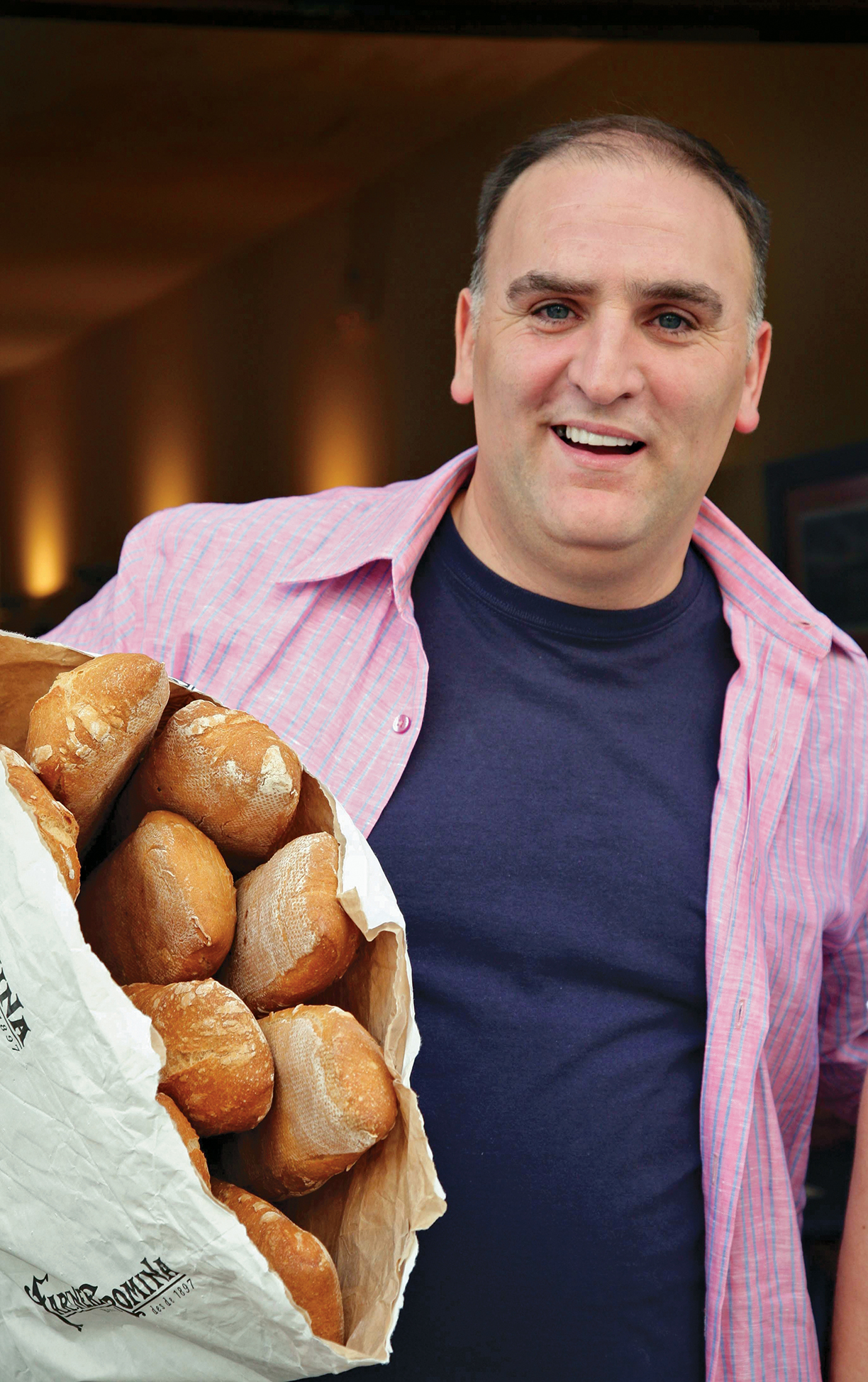
Photo courtesy of José Andrés
José Andrés
Open for Business
Florida is big business, and if the Sunshine State was a nation, its $1 trillion gross domestic product (GDP) would be eclipsed by only 16 countries. Tourism has an annual economic impact of more than $85 billion, but the Florida economy is much more diverse than manicured fairways, white-sand beaches and theme parks.
Aerospace, which arrived with the Space Program, continues to be an economic engine, with aircraft and related parts now being the state’s number one export. With long growing seasons, agriculture contributes even more to the state’s economy than tourism, and it is not just citrus (in fact, Florida’s most exported commodity is meats). Greater Orlando’s economy is no longer dominated by Mickey and Minnie, and its burgeoning technology community contributes $12.5 billion per year to its economy.
Another accelerating business sector statewide is health science, best represented by the world-class Scripps Research Institute in Palm Beach County. Florida’s growing economic influence naturally translates into greater demand for luxury amenities and residences.
This editorial originally appeared in Unique Homes Winter 2020.
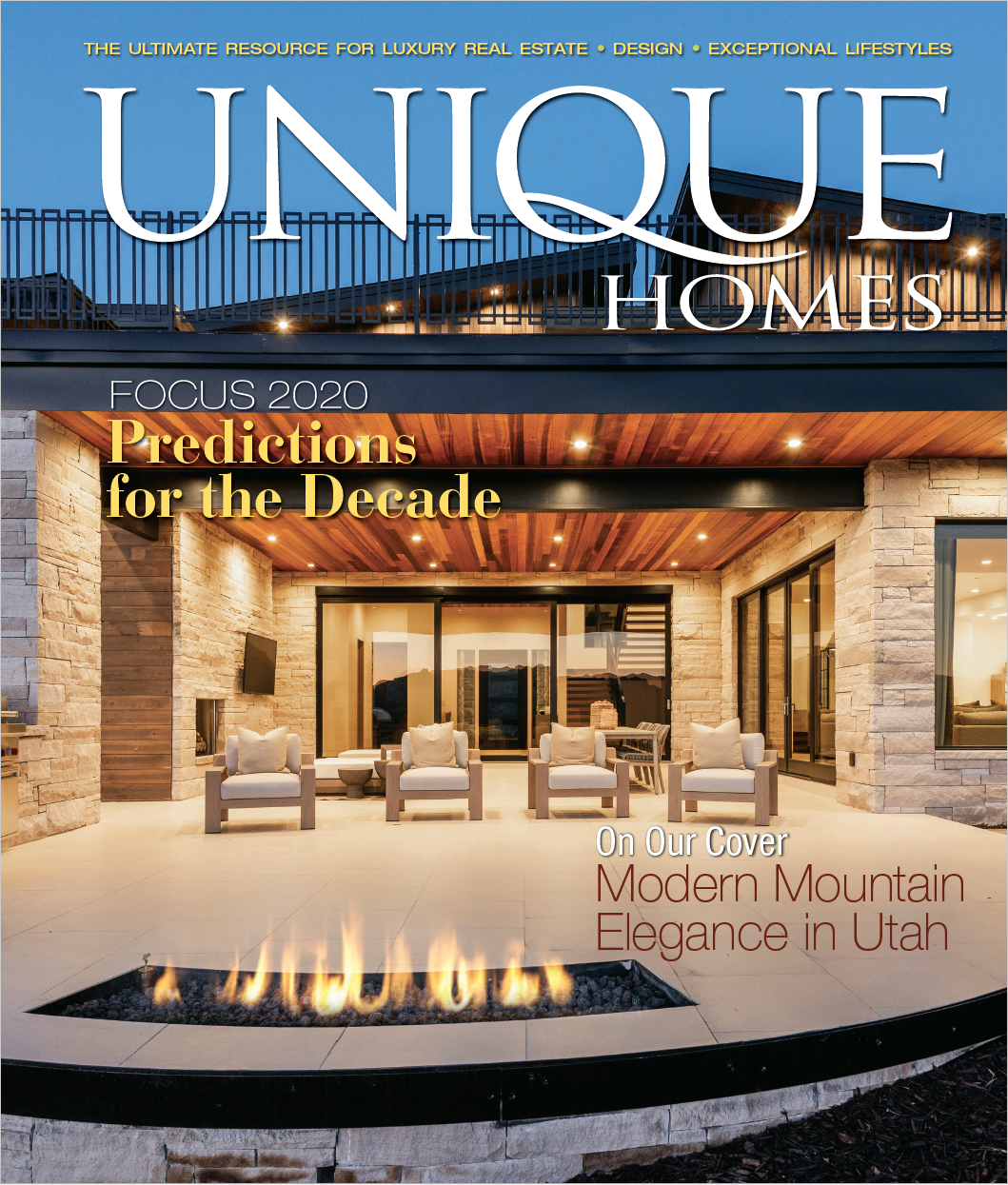
Once relegated to unpretentious mom-and-pop eateries, the diverse cuisine of the Middle East has graduated to sophisticated, award-winning restaurants across America.
Every Middle Eastern culture has its own food (some countries even have distinct local cuisines), but culinary boundaries are much more amorphous than national borders. Despite a surprising degree of cultural diversity, the region’s indigenous products — chickpeas, dates, pomegranates, saffron, and olive oil, to name a few — result in some universal themes, even among adversaries.
Additionally, the use of spices like turmeric, cumin, garlic and sumac contribute to consistencies from Israel to Turkey, Lebanon to Iran. The cooking of all of those distant lands is drawing unprecedented interest among American diners, who are attracted by both its exotic qualities and relative healthfulness.
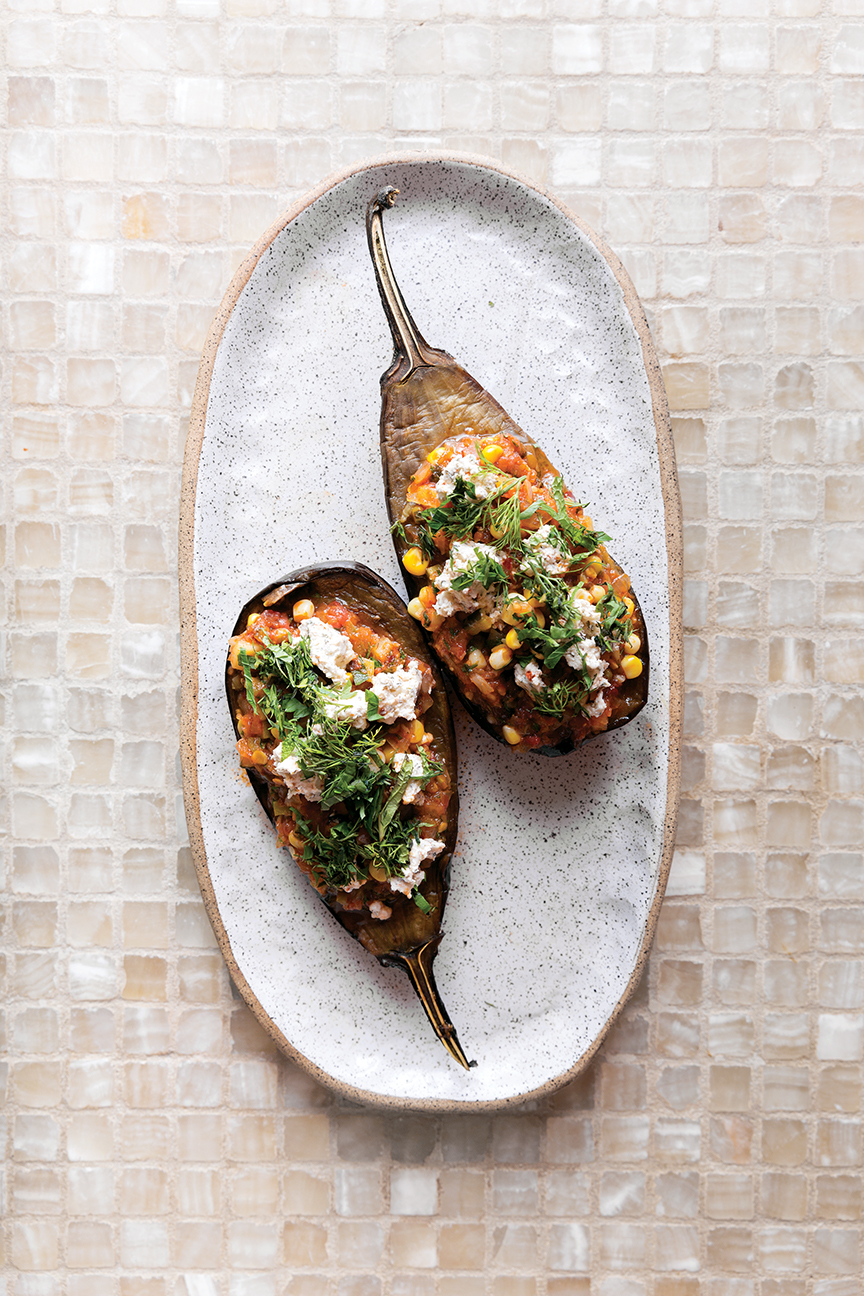
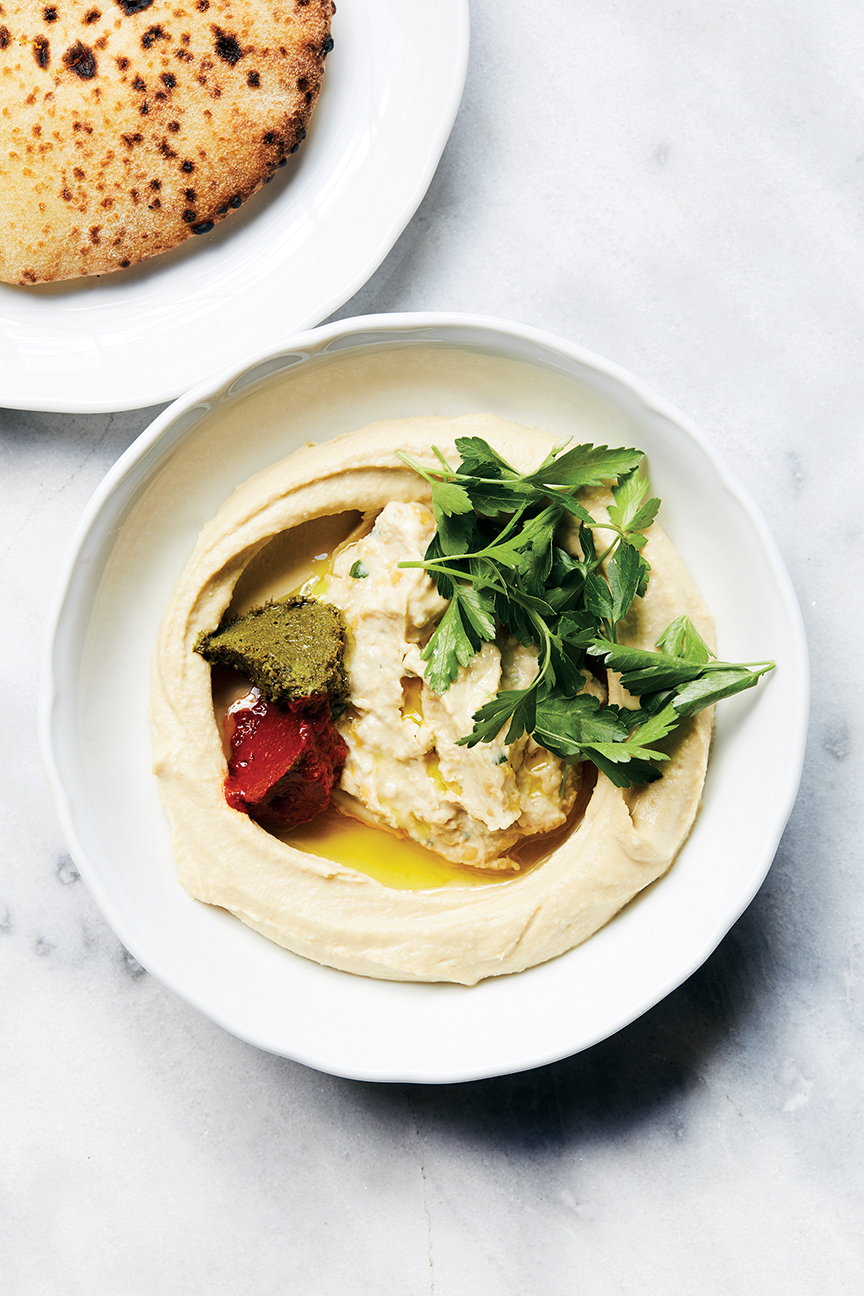
Photo by Nicole Franzen
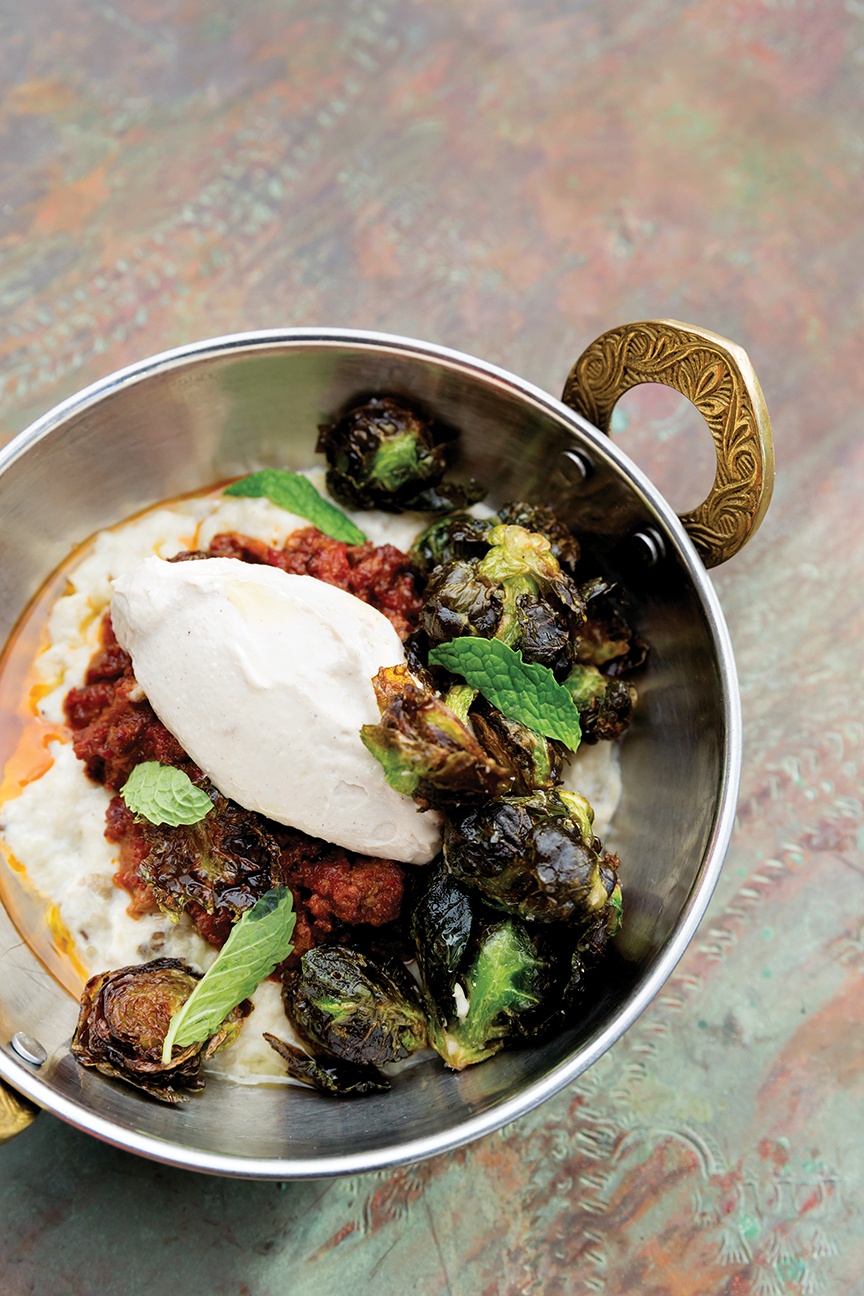
Food Photos by Kristin Teig Photography
Chef Michael Solomonov, a native Israeli who grew up in Pittsburgh, opened Zahav (“gold” in Hebrew) in Philadelphia a decade ago and has won multiple James Beard Awards for his modern Israeli cuisine. Hardly an elitist, the chef/owner is frequently found covered in flour, preparing his legendary laffa bread dough for the restaurant’s wood-burning oven. In his festive, high-ceilinged dining room, traditional lanterns hang over the bar and a photo mural of Jerusalem’s Machane Yehuda Market sets the mood.
Author of Israeli Soul and Zahav: A World of Israeli Cooking (for which he won a couple of those awards), Solomonov is pleased to introduce authentic Israeli cooking to American diners. “Zahav was our way of bringing Israeli hospitality and the soul of Israeli cooking and dining to the U.S.,” says the chef. Solomonov reports that originally the menu was very literal, concentrating on authentic Israeli dishes. “But now we’ve become more comfortable in this conduit role and the relationship that we have for being a culinary tour guide, implying Israeli food without having to copy-and-paste recipes we see over there.”
“We can’t simply call Israeli cooking ‘Middle Eastern,’” insists Solomonov, noting the diverse influences in the country, including about 100 cultures represented by Israeli residents. “We have this convergence of European, Middle Eastern and North African cuisines all happening symbiotically — that’s what makes our food Israeli,” he says.

Photo by Kristin Teig Photography
Hummus with various toppings arrives with Solomonov’s signature laffa, while other mezze include veal carpaccio with coffee-brined egg and preserved lemon, and grilled duck hearts with green garbanzos. Grilled over coals are merguez sausages, harissa-spiked hanger steak or branzino, all elevated versions of traditional dishes from Israel.
The acclaimed chef points to diversity as one of the factors contributing to the current popularity of the region’s cooking, noting that its reliance on vegetables and traditional techniques (e.g. cooking over wood) also appeal to contemporary restaurant-goers. “Diners are always looking for something new, and since there’s so much history and soul in this cuisine, I think it relates to American cooking more than people realize,” says Solomonov.
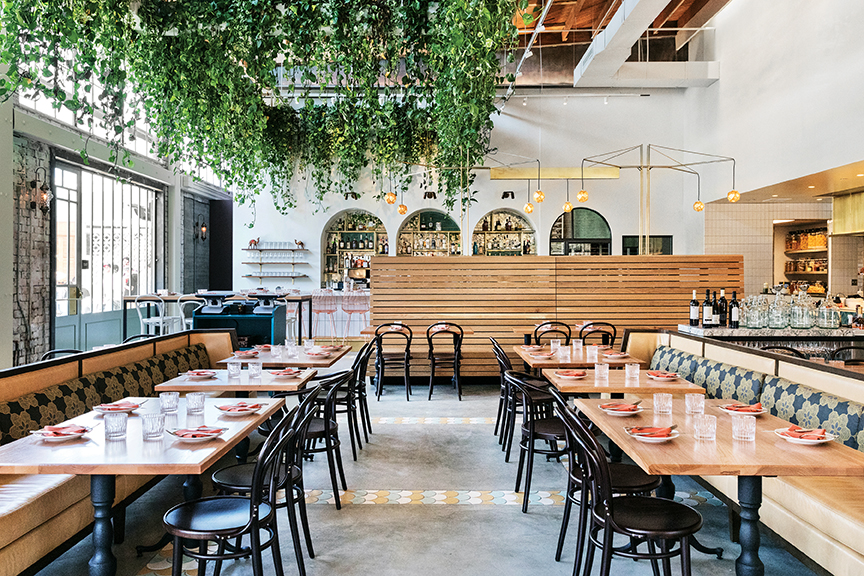
Photo by Dylan + Jeni
Bavel Los Angeles
In the Arts District in downtown Los Angeles, where crumbling factories are being transformed into chic art galleries, boutiques and bistros, young chef Ori Menashe and wife Genevieve Gergis have become prominent restaurateurs. Their first establishment, Italian-inspired Bestia, gave the Arts District culinary cred back in 2012, and this year they followed it up with Bavel, a contemporary Middle Eastern eatery.
Menashe was born in L.A., but raised in Israel, and collectively the couple also has roots in Morocco, Turkey and Egypt, so their menu at Bavel is informed by the entire region. L.A., with its large Persian and Armenian populations, is a city already accustomed to Middle Eastern cuisine, but Bavel satisfies a pent-up demand for a more sophisticated, contemporary experience. Dishes such as velvety foie gras halva, lamb tartare and grilled dorade with red charmoula delight diners.
“We always wanted to open a restaurant that showcases cuisine from our family lineage with flavors and spices we grew up with,” explains Gergis, who also serves as Bavel’s pastry chef. The couple does not believe in being limited by expectations of authenticity and is more concerned about allowing high quality ingredients to take center stage. “Everyone is always searching for authenticity, but every day in this world people are creating beautiful new works of art and delicious things to eat while only being authentic to themselves,” explains Menashe.
At Cambridge, Massachusetts’ Oleana, a mile from the Harvard campus, chef/owner Ana Sortun creates a progressive menu inspired by the cuisine of Turkey, which she fell in love with as a young chef. “The food is so rich, but nothing is heavy,” says Sortun, explaining the sophisticated use of spices in Turkish cooking is distinct from any other cuisine.
“My mission was to expand people’s perception of the Mediterranean and bring Middle Eastern cuisine into the mainstream,” says the classically trained Sortun, whose heritage is actually Norwegian. She suggests that increased travel to the region, health-consciousness and advocacy from chefs like Zahav’s Michael Solomonov are contributing to unprecedented popularity of the region’s cooking.
“I try to introduce my customers to authentic flavors, not necessarily the kind of authentic dishes I would cook if I was a native of Turkey,” says Sortun, who admits a penchant for creativity. A meal at Oleana might begin with mezze such as spinach falafel, quail kabab with a baharat spice blend, or Mediterranean deviled eggs. Larger plates include za’atar-spiced chicken with a Turkish cheese pancake or striped bass with pistachio muhammara, followed by desserts like a Turkish rendition of profiteroles.
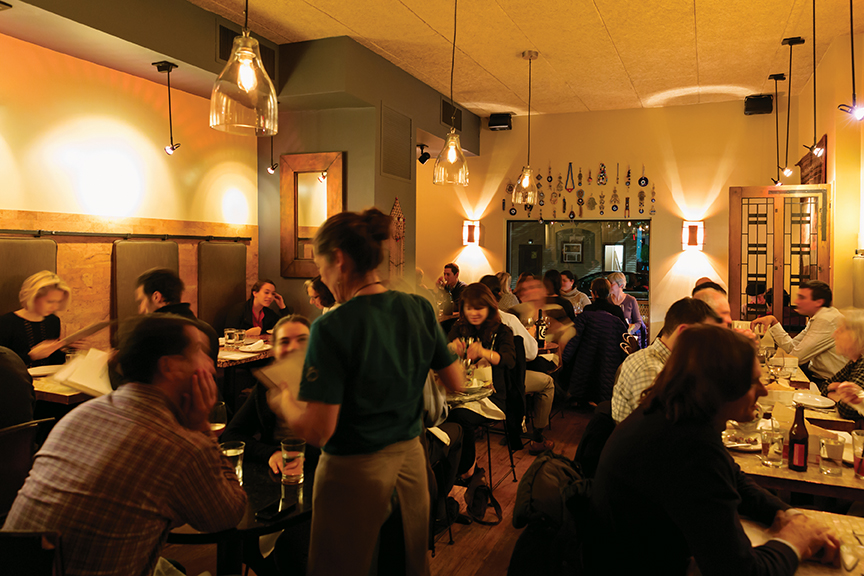
Photo by Kristin Teig Photography.
Oleana Cambridge, Massachusetts
Sortun also co-owns a casual bakery and mezze bar in Cambridge called Sofra, and Sarma in nearby Somerville where former Oleana chef Cassie Piuma presents Middle Eastern exoticism disguised as familiar American comfort foods. “We wanted Sarma to be young and accessible, with small plates and a big bar,” says Sortun, who adds, “It’s more playful, less serious than Oleana.”
Snacks at Sarma include Turkish-spiced beef jerky, brisket shawarma served taco-style, pork belly biscuit sliders layered with jalapeño-whipped feta, and a Middle Eastern riff on the iconic Philly cheesesteak. “Cassie is using language to make the cuisine at Sarma more accessible,” says Sortun, noting that expressing familiar concepts builds trust with diners.
New Orleans hardly seems the place to find exceptional Middle Eastern cuisine, but Big Easy diners are happy to take a break from gumbo and étouffée for chef Alon Shaya’s contemporary Israeli cuisine. His restaurant, Saba (“grandfather” in Hebrew), features a homey dining room and a menu that layers modern concepts over ancient traditions from the Middle East.
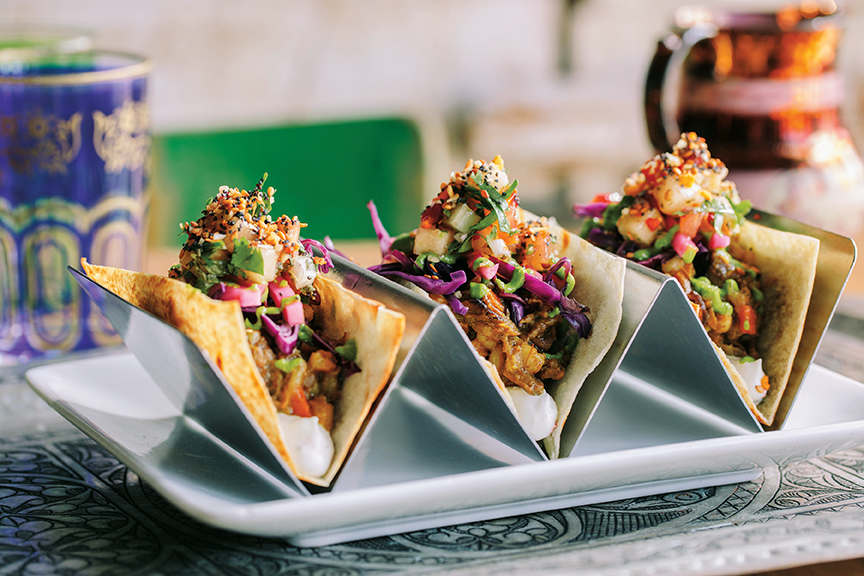
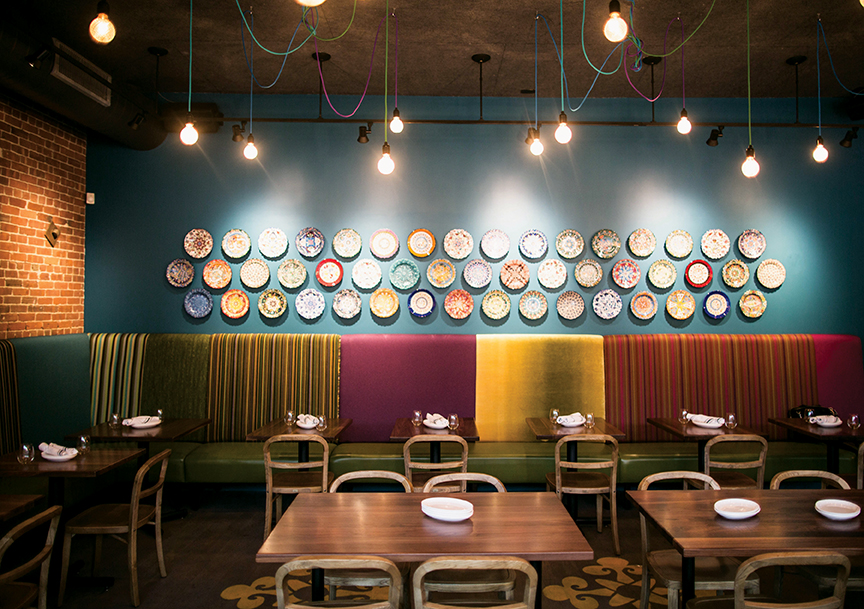
Photo by Susie Cushner.
Sarma Somerville, Massachusetts
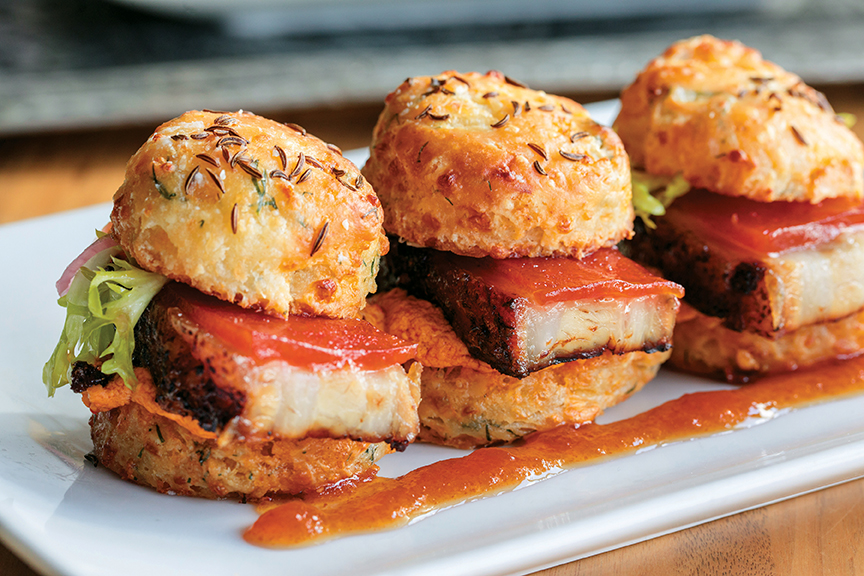
Food Photos by Brian Samuels.
At Saba, Shaya offers a selection of hummus preparations incorporating everything from spicy Brussels sprouts to blue crab, while octopus is treated with shawarma spices and foie gras is complemented with date honey and Marcona almonds. Caviar may precede family-style harissa-roasted chicken or Moroccan-inspired lamb shank pastilla.
“We don’t try to invent anything,” says Shaya, who states the restaurant’s goal is to create food that evokes memories and emotions. Concurring with Philadelphia’s Solomonov, he reports, “Israeli cuisine is different because of the immigration that occurred over the last 70 years,” with cultural influences in Israel, including Russian, Yemenite, Greek, and Moroccan. “It’s how those cuisines intermingle that make it unique,” adds the Israeli-born chef/owner.
Shaya does not necessarily subscribe to the view that Israeli and Middle Eastern cuisines are suddenly trendy. “I think it’s just good, comforting and recognizable food,” he says, adding for emphasis, “I think it’s actually anti-trendy, and that’s why so many people like it.”
Bavel Los Angeles www.baveldtla.com
Saba New Orleans www.eatwithsaba.com
Oleana Cambridge, Massachusetts www.oleanarestaurant.com
Sarma Somerville, Massachusetts www.sarmarestaurant.com
Sofia Bakery & Café Cambridge, Massachusetts www.sofiabakery.com
Zahav Philadelphia www.zahavrestaurant.com
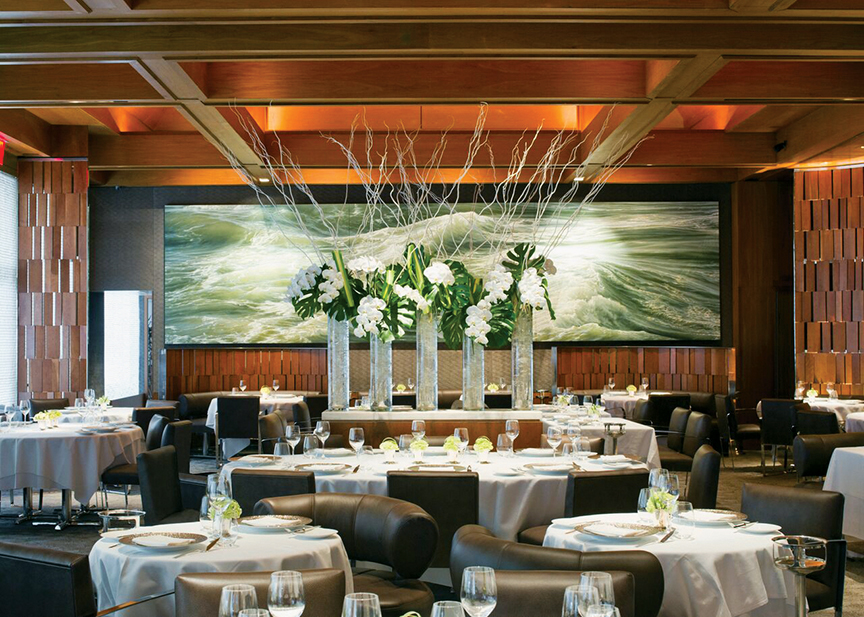
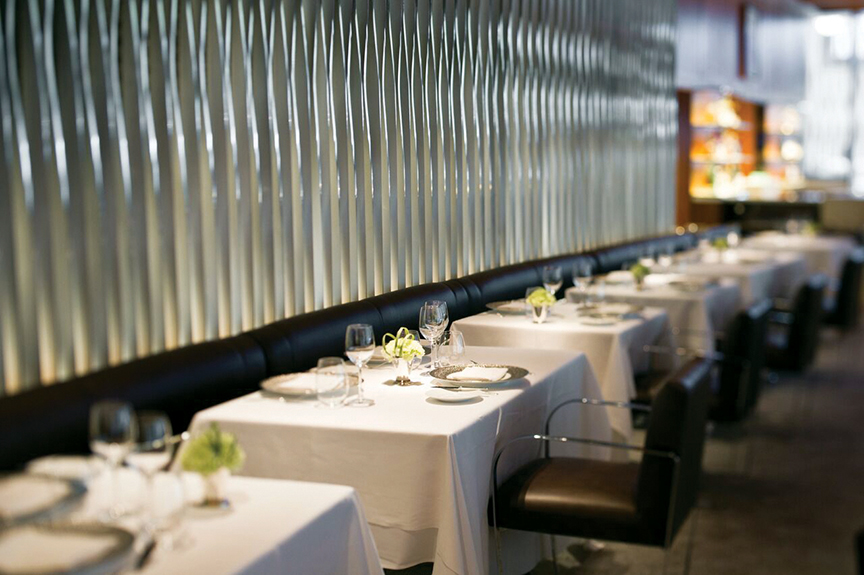
Photos courtesy of Le Bernadin
Overall, Americans are shunning haute cuisine, but for elite diners there remain plenty of opportunities for conspicuous consumption.
By Roger Grody
Generally, “fine dining” — typically evidenced by crisp white tablecloths, crystal stemware and formal service — is rapidly disappearing in America. However, for those restaurants that stubbornly adhere to tradition and insist on genuine luxury, the experience is elevated … along with the price.
Charlie Trotter, the renowned Chicago chef who died in his prime, insisted that fine dining actually represents good value, citing the superb ingredients and intensive labor (100 people from farmers to servers) that contribute to a world-class meal. Average Americans cannot afford mansions or yachts, but many can occasionally experience the world’s finest cuisine. The restaurants featured herein honor Trotter’s philosophy, with some pushing his principle to its limits.
Le Bernardin is one of New York’s temples of gastronomy, where chef/partner Éric Ripert has earned acclaim for fresh, seasonable seafood enhanced through sophisticated French technique. With options between $170 and $225 per person, the prix fixe menus at Le Bernardin are actually restrained for a Michelin three-star restaurant, but a couple can drop a bundle once caviar and wine are added.
“Luxurious service no longer equates to the stiff environment with formulaic interactions that was once popular,” reports Ripert, and while Le Bernardin has pioneered a more approachable experience, the chef/restaurateur still values tradition. “We continue to be a destination for special occasions, which is a large part of why we uphold some of our more classical dining requirements, such as gentleman wearing jackets,” he says. Allowing guests to visit the kitchen and take photographs with staff might not have been something his mentor Joël Robuchon would have encouraged decades ago, but Ripert views it as part of the evolution of fine dining.
While French cooking has the reputation for being the most expensive, it is Japanese cuisine — particularly the art of sushi — that is the priciest in America today. Discretely tucked into a diminutive space on Beverly Hills’ Rodeo Drive is Urasawa, whose entire seating is essentially comprised of just eight chairs at a sushi bar. There, for a flat fee of $425 per person (before tax, tip or a drop of sake), sushi chef Hiroyuki Urasawa personally pampers guests with an omakase (chef’s choice) meal in which extraordinary ingredients are matched by artistry on the plate.
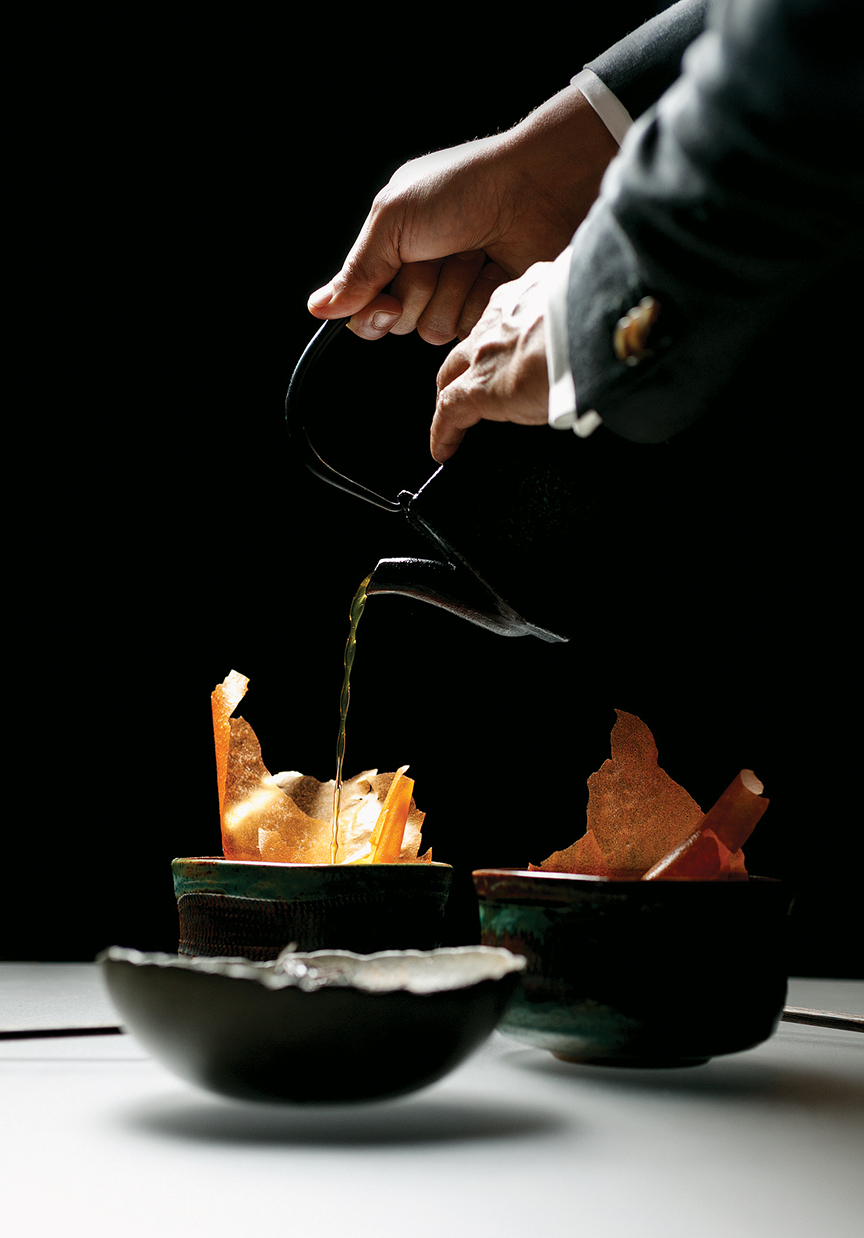

Photos by Allen Hemberger, interior by Matthew Gilson
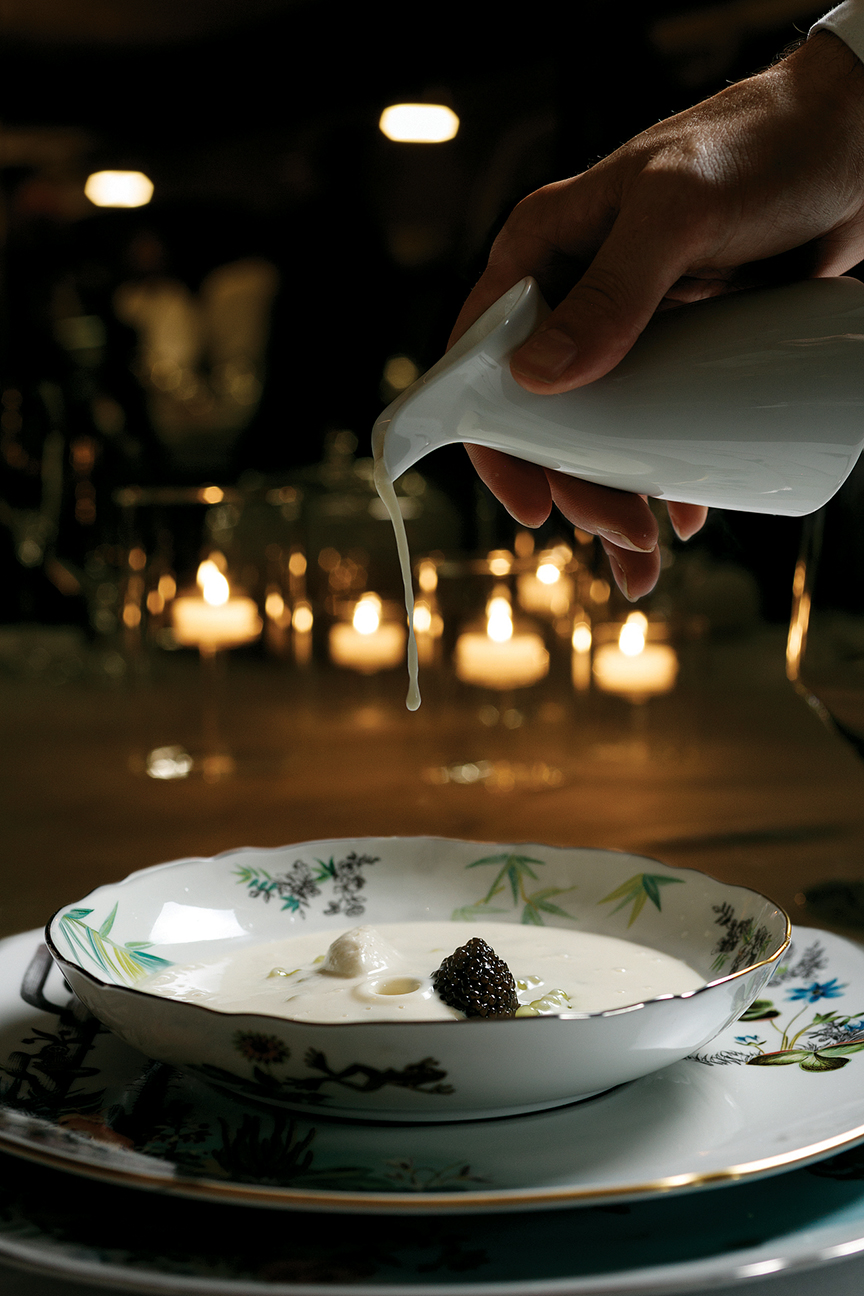
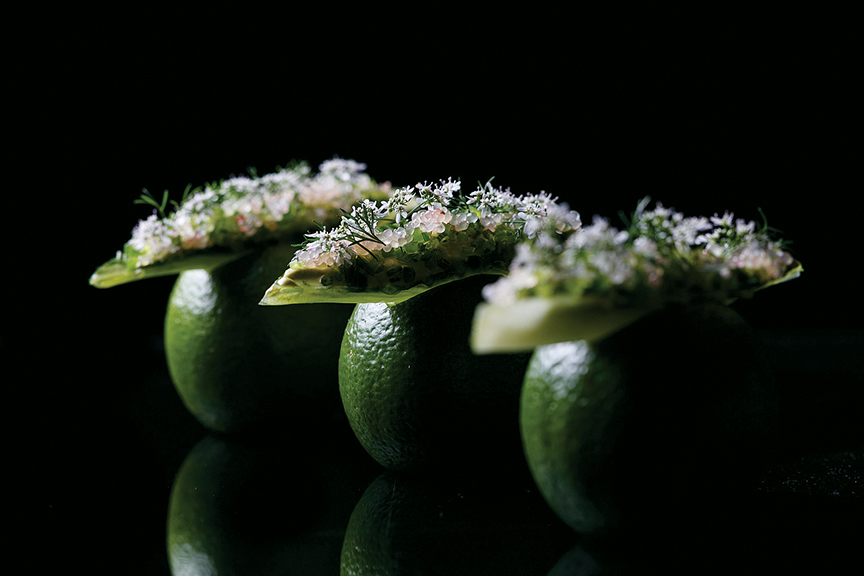
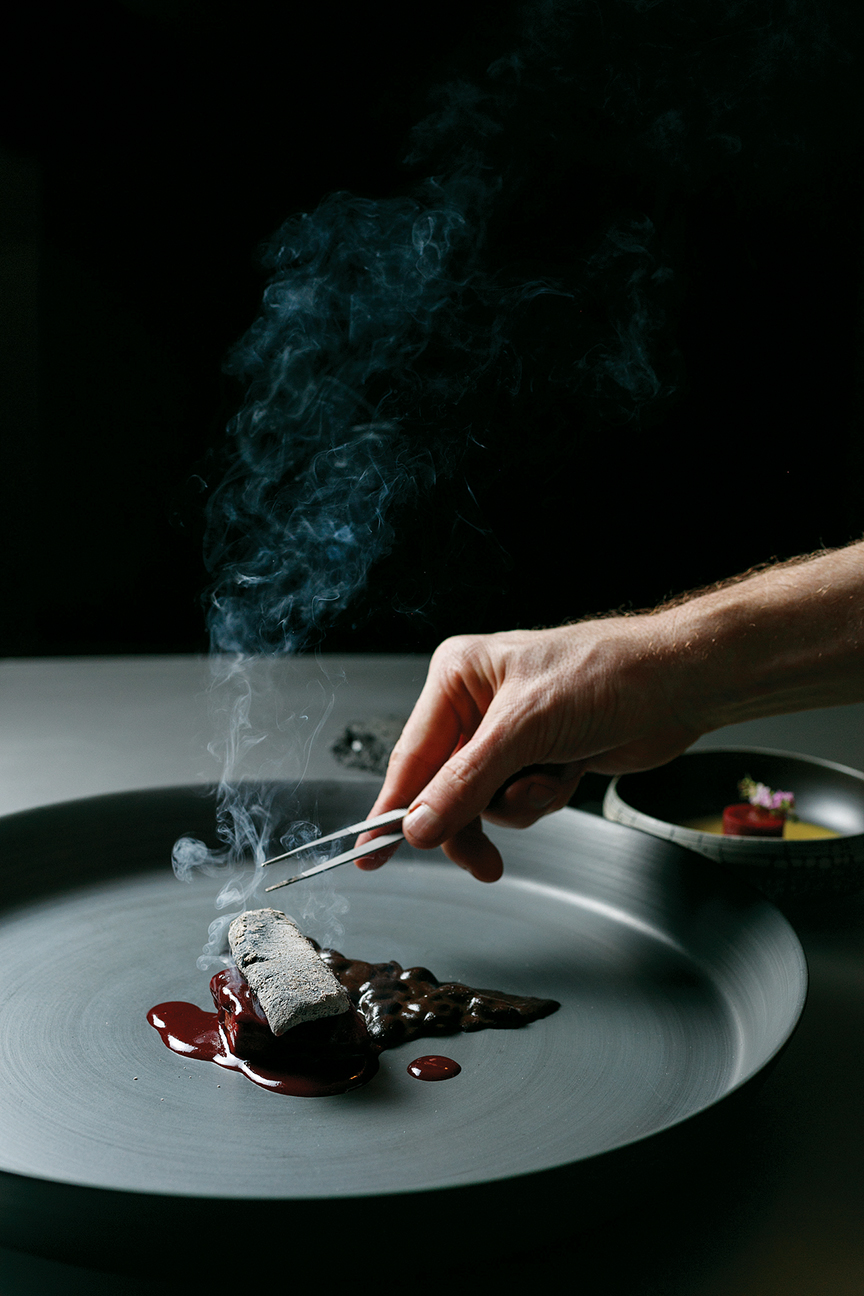
Urasawa-san is a protégé of sushi chef Masayoshi “Masa” Takayama, whose own restaurant previously occupied that same Beverly Hills space. When Takayama was lured to New York to open his 26-seat Masa at Time Warner Center, the prices went up and are now $595 per person, although gratuities are not accepted.
Masa’s sushi bar, a solid piece of hinoki (Japanese cypress), is sanded daily to create a luxurious tactile surface, while flowering branches of seasonal plants provide the only distraction from the master’s work behind the counter. A procession of glistening, edible jewels — the exquisite plating includes ample caviar, truffles and uni — comprise an unforgettable two dozen-course feast that most believe is worth the price.
Alinea, the renowned flagship of culinary innovator Grant Achatz, is sometimes mistakenly viewed as an elaborate stage for the chef/owner’s bag of molecular gastronomical tricks, but innovation alone does not earn three Michelin stars. While the interactivity and playfulness of the cuisine may turn off traditionalists who insist on the hushed formality of what typically passes for fine dining, the sophistication of Achatz’s ingredients, imagination and technique is undeniable. The price for this carefully choreographed presentation of culinary and performance art can reach $385 per person, prior to making a wine selection.
While acknowledging the “absurdity” of paying so much for a meal, Jeff Ruby, chief dining critic at Chicago magazine, insists the Alinea experience is a sound investment. “Someday, Alinea will be gone, and people will speak of it with awe, and its legend will grow,” he says. “Like people who brag that they saw Michael Jordan play in his prime, you can say you ate at Alinea. That is worth way more than $385 to me.”
Ruby believes even traditionalists can find pleasure with Achatz’s concept, as long as they go with an open mind. “People walk in with a chip on their shoulders and Alinea knocks the chip off and turns it into some kind of dehydrated truffle orb,” quips Ruby, insisting Achatz and his crew deliver on their promise night after night.
Located in a posh hotel 20 miles north of downtown San Diego is Addison, where 22-karat gold-trimmed doors open into a soaring foyer while four limestone fireplaces warm the classically inspired premises. In the kitchen, Executive Chef William Bradley prepares a contemporary French cuisine while $10,000-plus treasures are stocked in the wine cellar. Although the chef’s 10-course tasting menu is a relatively manageable $250, Addison recently hosted a Krug Champagne dinner that at $1,000 per head is extravagant by any standard.
“At Addison, every element is fine-tuned through the lens of creating the best and most memorable dining experience possible for our guests from the moment they walk through the door,” reports Bradley. Noting that many diners are celebrating special occasions or have traveled a great distance, he adds that small details (e.g. generously spaced tables, stools for ladies’ purses) are the foundation of the guest experience.
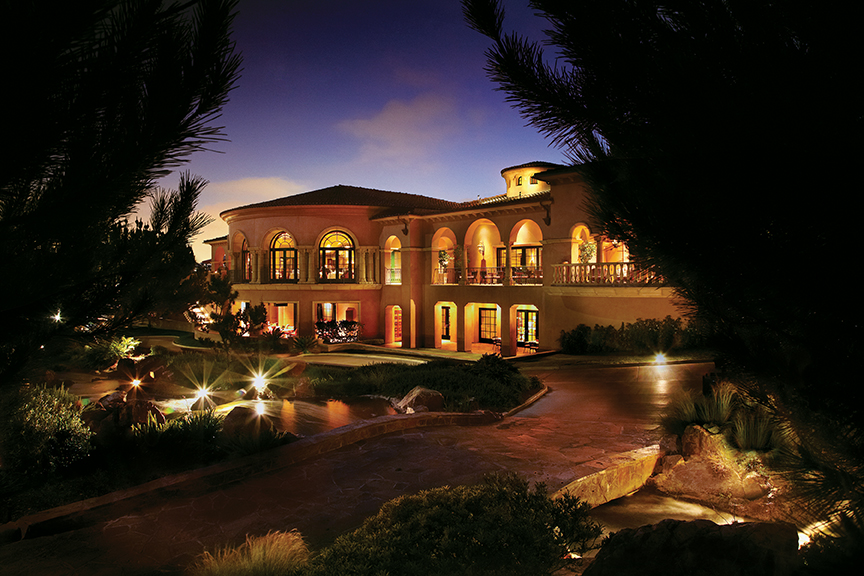
Photos courtesy of Tory Kooyman and Jakob N. Layman
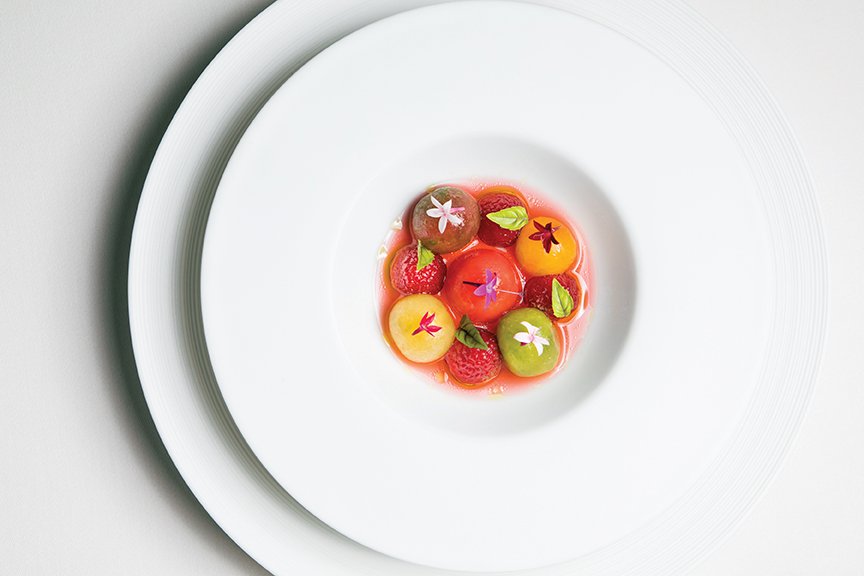
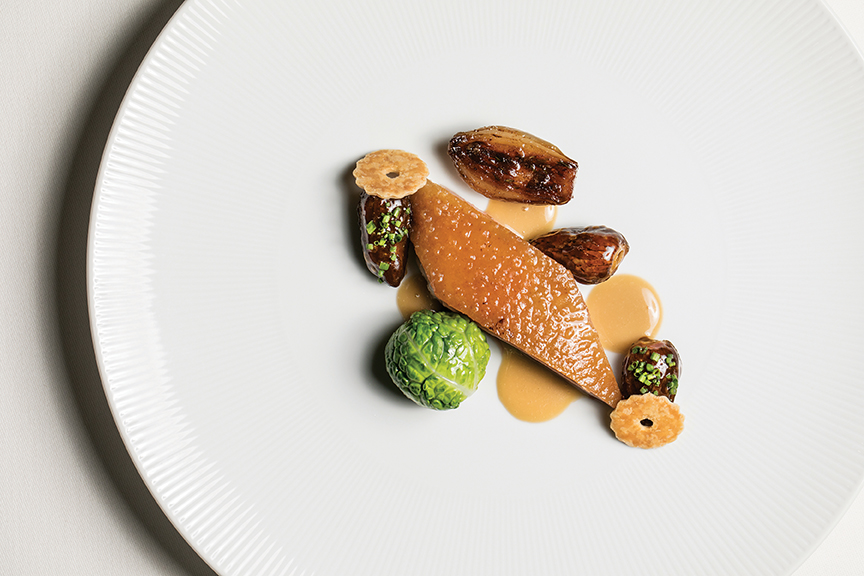
“Hospitality is timeless, as is the desire to be transported,” says Bradley, noting that the dining experience at Addison — it is tucked away in the hills above Del Mar — echoes its physical separation from metropolitan San Diego or L.A. “In an era where we’re so connected to technology, it’s more important than ever to maintain fine dining traditions that separate our guests from the stress of their daily routines,” suggests the chef.
Addison’s bar is currently dispensing a $250 cocktail called the Corpse Reviver XIII, a reimagination of a classic libation with roots in the 19th century. This gold dust-embellished version contains Adrien Camut Rareté (a Calvados so rare only 10 bottles are allocated to the U.S. annually) and 40-year-aged Rémy Martin Louis XIII Cognac. With its price equivalent to the tasting menu, this is clearly an indulgence worth lingering over.
In San Francisco, Saison ranks as the most exclusive and expensive restaurant in town, where exquisitely presented contemporary American fare is served in a space where the boundaries between dining room and kitchen are all but erased. A procession of nearly 20 small courses, which changes daily and can be tailored to the preferences of individual diners, carries a tariff of $398 —before even exploring Saison’s world-class wine list.
In Las Vegas, where winners and losers alike are as predisposed to consume opulent cuisine as they are to purchase Louis Vuitton bags, every major hotel has at least one ultra-high-end dining room. At Caesar’s Palace it is the eponymous restaurant of Guy Savoy, one of Paris’ Michelin three-star stalwarts, where the “Prestige Tasting Menu” runs $385 per person and premium wine pairings add another $375.
At Twist, a celebrated dining venue at the Mandarin Oriental Las Vegas, Chef Pierre Gagnaire (another giant of the Parisian dining scene) presents what may be the luckiest menu on the city’s legendary Strip. A seven-course meal is paired with seven fine wines to comprise a memorable gastronomic experience, and hopefully its $777 per person investment can be recouped with some additional sevens in a nearby casino.
At the Mandalay Bay’s Fleur in Las Vegas, even the ultimate comfort food can inflict extensive damage to one’s budget. There, chef/owner Hubert Keller applies the city’s legendary glam to the humble hamburger, layering foie gras and truffles over a wagyu beef patty. It arrives with a bottle of 1995 Château Pétrus, one of the world’s most treasured wines, followed by a $5,000 tab.
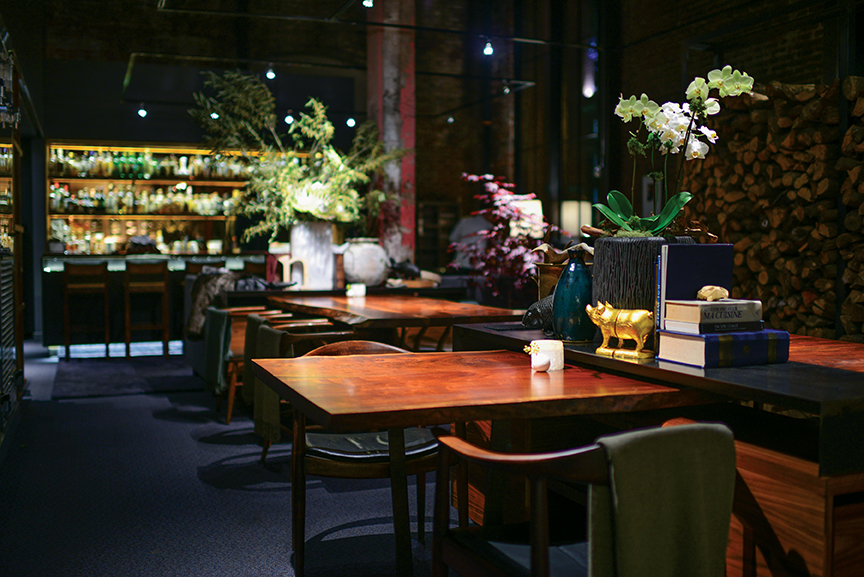
Photos by Bonjwing Lee
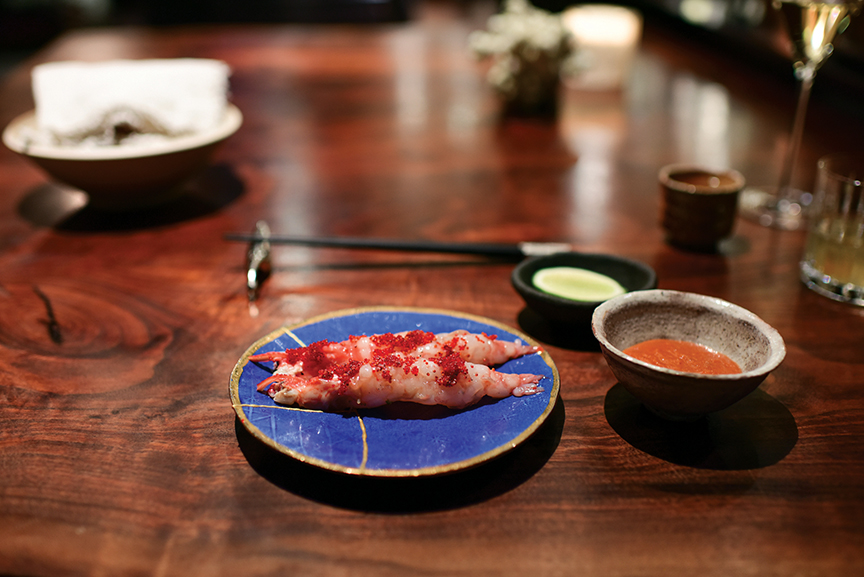
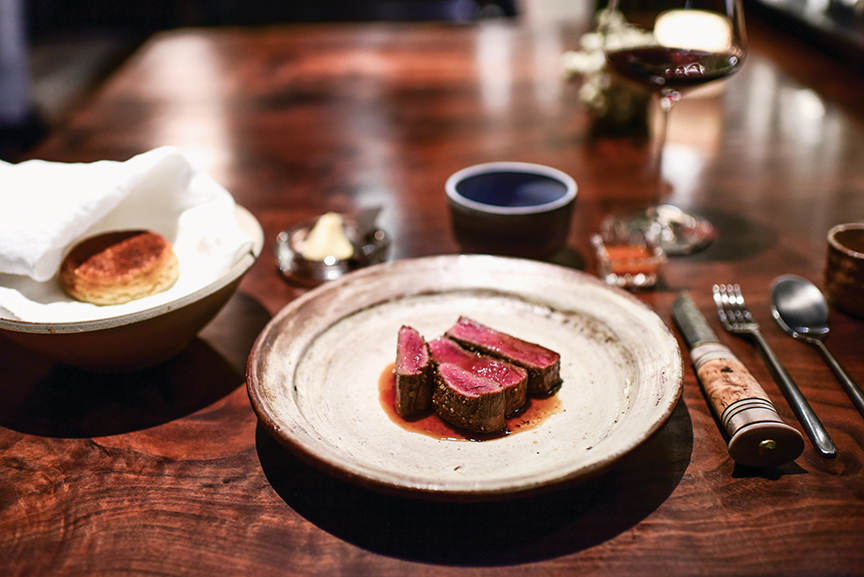
Addison • San Diego • www.addisondelmar.com
Alinea • Chicago • www.alinearestaurant.com
Fleur by Hubert Keller • Las Vegas • www.hubertkeller.com
Restaurant Guy Savoy • Las Vegas • www.caesars.com
Le Bernardin • New York • www.le-bernardin.com
Masa • New York • www.masanyc.com
Saison • San Francisco • www.saisonsf.com
Twist • Las Vegas • www.mandarinoriental.com/las-vegas
Urasawa • Beverly Hills • http://urasawa.cafe-inspector.com
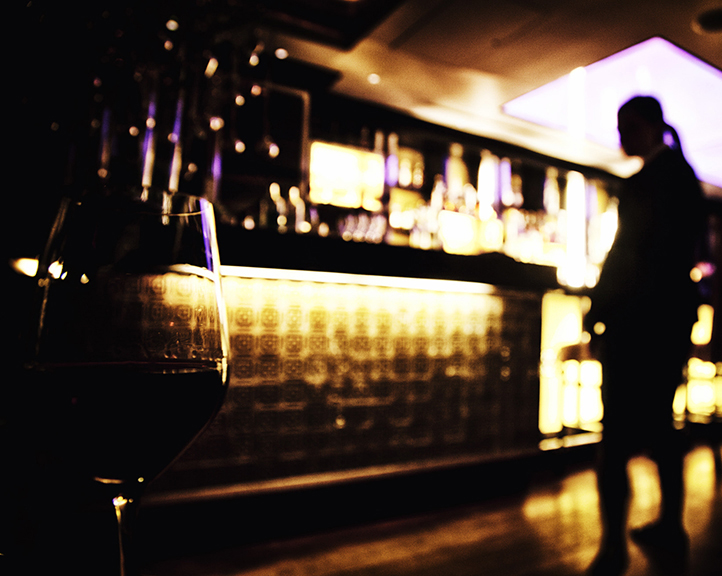
Photo courtesy Jack Oughton.
DUE TO THE EVER-CHANGING MOOD OF HIGH-END DINERS, HOTEL MANAGEMENT CONTINUES TO ADAPT TO NEW AND EXCITING CHALLENGES WITHIN THE FOOD AND BEVERAGE SECTOR OF LUXURY TRAVEL. IN A RECENT POST BY TEXAS MEETINGS + EVENTS, EXECUTIVE CHEFS AND MANAGEMENT MEMBERS DISCUSS TRENDS WITHIN THE WESTERN REGION OF US THAT ARE BECOMING UNIVERSALLY SEEN IN HOTELS ACROSS THE COUNTRY.
LOCAL SOURCING & AUTHENTICITY
“Traveling is all about experiencing a new culture, and that includes fare from the region guests are visiting,” says James Morin, executive chef at the Hyatt Regency Hill Country Resort & Spa located in San Antonio.
“We see a lot of guests enthralled by the culture of our Lone Star State, and they want to experience that unique Texas flavor in authentic cuisine.”
Showcasing the sourcing of ingredients and partnerships with local suppliers is a shift from previous priorities. The George R. Brown Convention Center also works to showcase its local partners by prominently featuring their branding in restaurant and café experiences, according to Chris Bupp, general manager of Levy, the exclusive food and beverage provider for the convention center.
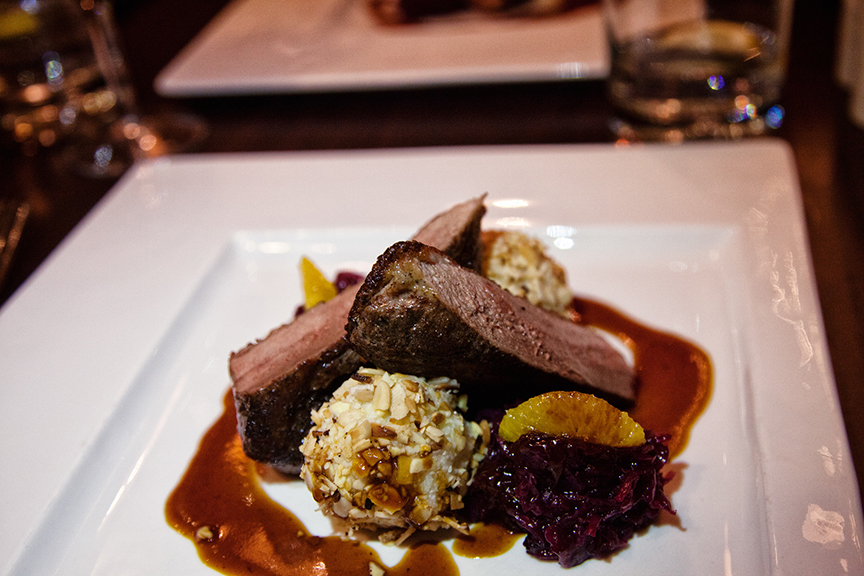
Photo by Jack Oughton.
One example of this is the convention center’s relationship with local company Java Pura as a coffee vendor. “In telling people about it, it’s roasted down the street and it’s available across Texas,” Bupp says. “What a great story to tell, and consumers love hearing about it.”
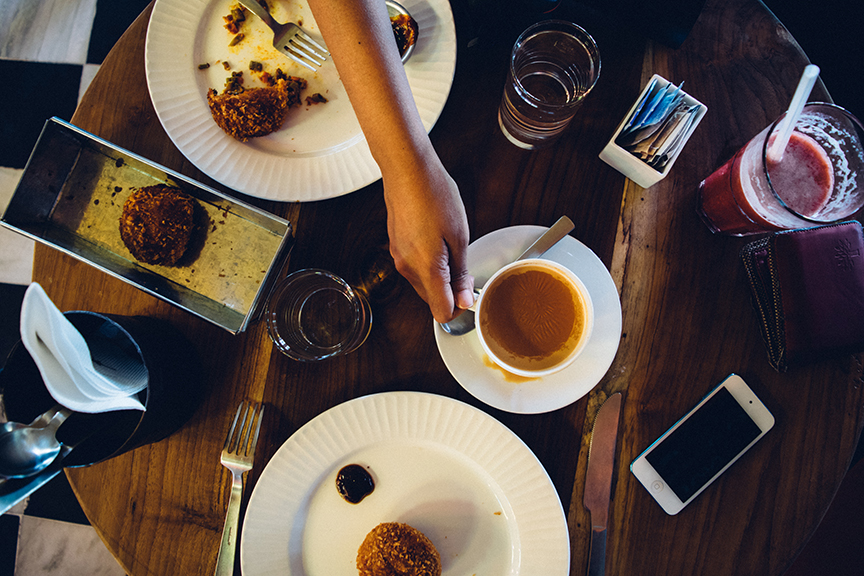
Photo by Vishnuvardan.
HEALTHY ALTERNATIVES & DIETARY RESTRICTIONS
Chefs at multiple hotels and resorts spoke about an increased desire to develop menus with healthy options for attendees. For breakfast, often groups are looking for healthy options and “light action stations,” as they “want to see how the food is prepared,” says Christof Syré, executive chef at the Four Seasons Resort and Club Dallas at Las Colinas.
In regards to particular ingredients, grains such as quinoa, farro and sorghum have gained a new spotlight, as well as cold oatmeal and avocado toast topped with smoked salmon or a poached egg. Salmon has been a strong ingredient for Ruffy Sulaiman, executive chef at Hilton Americas-Houston.
“When we do a lot of tastings, each time we have salmon in the tasting, salmon always wins,” Sulaiman says. He credits the interest in salmon because it’s loaded with Omega 3 and appeals to most health-conscious eaters.
Coinciding healthy options are dietary restrictions, a complicated but rewarding challenge that the hotel industry finds itself constantly working toward accommodating, says Sulaiman. “It allows us to be as creative as possible to make sure that we take care of those folks.”
GOODBYE BUFFETS, HELLO POP-UP EXPERIENCES
Long buffet lines are going by the wayside, according to Sulaiman, as event planners are now sticking with smaller plates to continue the “less is more” trend. Sulaiman has developed different pop-up food experiences that highlight various cultures represented in Houston, including an Indian station with chicken Marsala and lamb shashlik and a pho station to represent Vietnamese culture.
To learn more from these inspired experts from the Lone Star state, visit Texas Meeting + Events’ post!
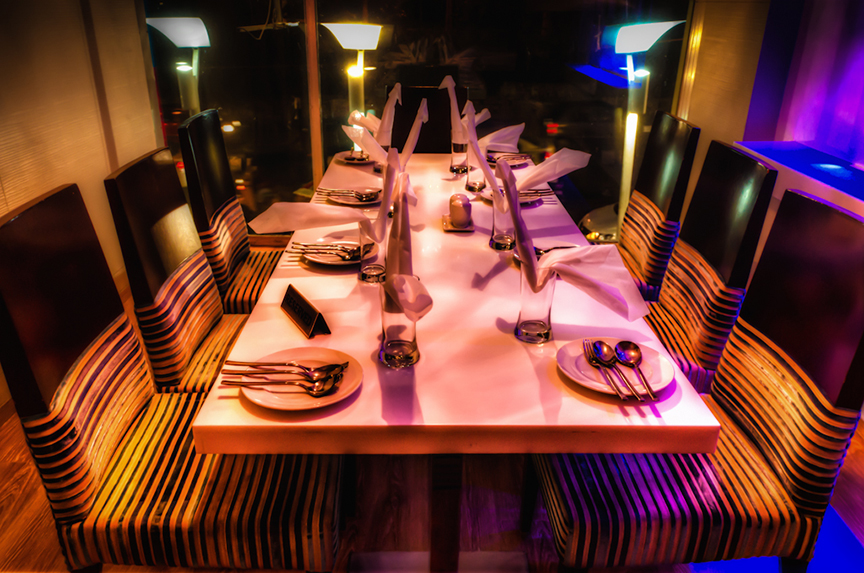
Photo courtesy Swastiverma.














